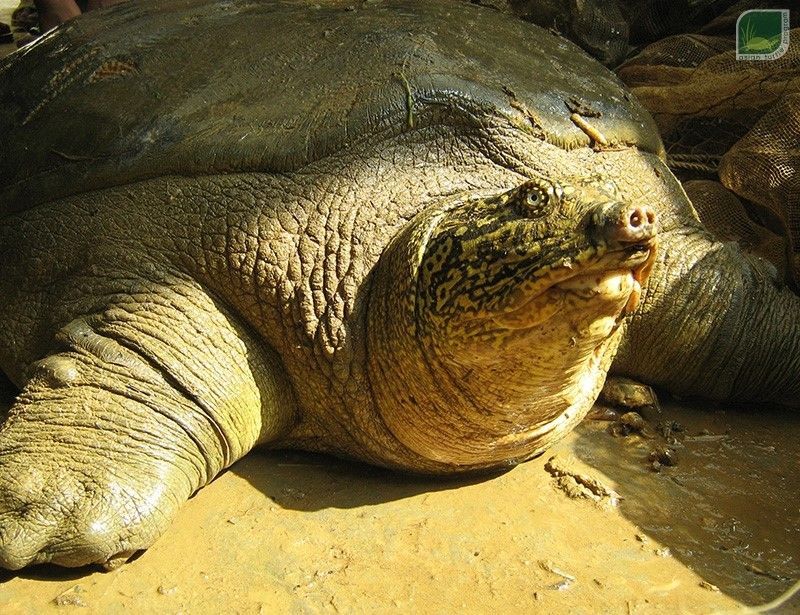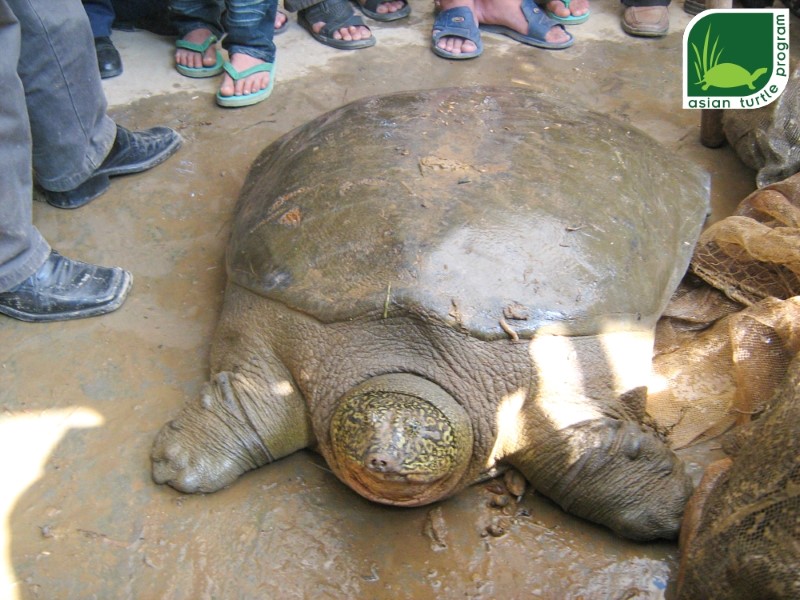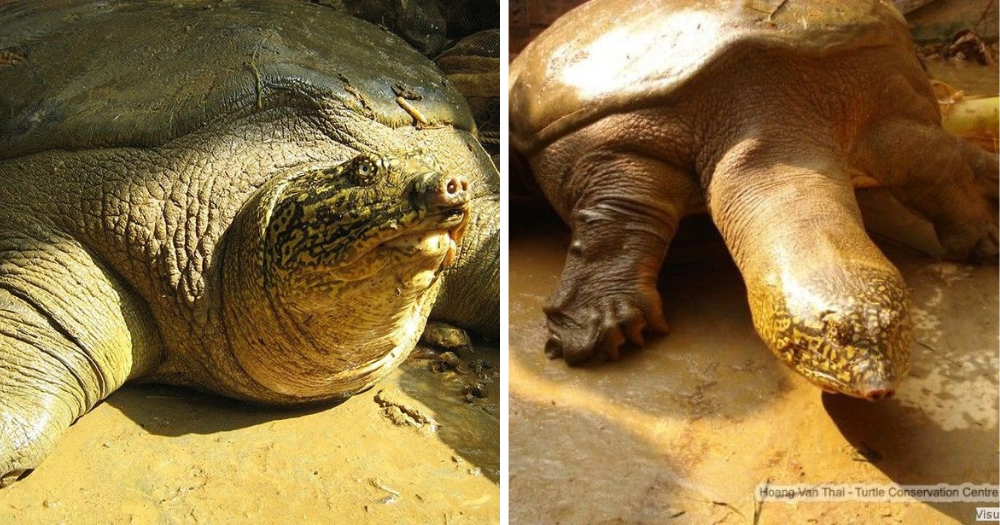Follow us on Telegram for the latest updates: https://t.me/mothershipsg
With climate change and habitat destruction, many species are currently facing extinction.
Recently, the last known female Yangtze giant softshell turtle died in Vietnam, after the passing of another female in a zoo in 2019.
 A female Giant Yangtze Softshell turtle in Hanoi, 2008 (Image via Asian Turtle Program)
A female Giant Yangtze Softshell turtle in Hanoi, 2008 (Image via Asian Turtle Program)
Death of the turtle
On Apr. 24, VnExpress, a Vietnamese news publication, reported that the turtle was found floating motionlessly on Đồng Mô Lake, Hanoi.
According to Phung Huy Vinh, head of the economic department of Son Tay Town, the carcass was found by a member of a non-profit turtle protection group on Apr. 23.
The turtle was previously microchipped and released into the lake in 2020.
Phung said that the cause of death has "yet to be confirmed".
According to an official of the International Medical Corps (IMC), a non-profit organisation that oversees a project for the conservation of the Yangtze giant softshell turtle, the carcass was 1.56m long and weighed 93kg, reported VnExpress.
Researchers are currently examining the body to determine the age of the turtle as well as the cause of death.
On the brink of extinction
According to The Guardian, the female turtle was first discovered in January 2021.
TIME Magazine (TIME) stated that the passing of the female turtle means that only two male turtles remain.
One can be found in Suzhou Zoo in China and the other in Hanoi’s Xuân Khanh Lake.
A female Yangtze giant softshell turtle had previously died in 2019 in Suzhou Zoo in the middle of breeding attempts.
The pair was unable to reproduce naturally despite the staff's best efforts.
Tim McCormack, Director of the Asian Turtle Program for Indo-Myanmar Conservation, spoke to TIME and confirmed that the female turtle that died was the last known female of the species:
“It was a large female that obviously has great reproductive capacity. She could have potentially laid a hundred eggs or more a year.”
McCormack noted that the Vietnamese authorities will complete a genetic test of the carcass to confirm its identity.
Is there still hope for the species?
Speaking to TIME, McCormack added that for the 20 years he has been involved in the species' conservation, he has not seen any eggs.
“There has been an artificial nesting beach built in Đồng Mô Lake for almost 10 years now, which has had no nesting. So one of the questions has been whether this was a lone animal or whether there are other animals in Đồng Mô.”
According to the Asian Turtle Program however, another Yangtze giant softshell turtle may live in Đồng Mô Lake, providing some hope for conservationists.
This was echoed by VnExpress, which reported that there are four known specimens left, with two in China, one in Xuân Khanh Lake and the last in Đồng Mô Lake.
The possible remaining turtle in Đồng Mô Lake, as well as the now-dead female, were allegedly once photographed together with their heads above the water.
McCormack also expressed hope in capturing and identifying the one confirmed male turtle at Xuân Khanh Lake.
To support the turtles' conservation, the Hanoi People’s Committee for 2021-2025 had also proposed breeding the turtles, reported VnExpress.
While McCormack described the "loss of a large female" as "very sad", he believes that there are more of the turtles remaining.
“There are tissue samples being preserved from the Hoàn Kiếm turtle. That’s potential for the future, but ideally we should be protecting what we’ve got now.”
What is a Giant Yangtze Softshell turtle?
According to the Asian Turtle Program, the Giant Yangtze Softshell turtle is also known as the Swinhoe’s Softshell Turtle (Rafetus swinhoei).
 Turtle in Đồng Mô Lake (Image via Asian Turtle Program)
Turtle in Đồng Mô Lake (Image via Asian Turtle Program)
The species holds great spiritual importance in Vietnam.
In the 15th century, according to Vietnamese mythology, a turtle in Hoàn Kiếm Lake gifted a sword to an emperor, which he used to vanquish occupying Chinese forces.
The turtle is also the largest species of freshwater turtle on earth and is listed as Critically Endangered on the International Union of Conservation for Nature (IUCN)’s Red List of Threatened Species.
They live in large rivers and adjacent wetlands and lakes.
In the past, the turtles were found along the Red River drainage system and other large rivers in northern Vietnam and southern China.
The species has rapidly declined due to habitat loss, hunting, and trade for local consumption.
According to the EDGE of Existence Programme, the Yangtze giant softshell turtle is thought to be a species that has been around for more than 40 million years.
TIME stated that sightings of the turtle are rare.
In March 2011, a YouTube video was uploaded, showing a large crowd forming at one side of the Hoàn Kiếm Lake.
They were hoping to see the famed Cụ Rùa, the name given to the last Yangtze giant softshell Turtle in Hoàn Kiếm Lake, which died in 2016.
In the video, the huge turtle emerged from the water, ate a dead cat and sank back down into the lake.
Related articles
Images via Asian Turtle Program.
If you like what you read, follow us on Facebook, Instagram, Twitter and Telegram to get the latest updates.
